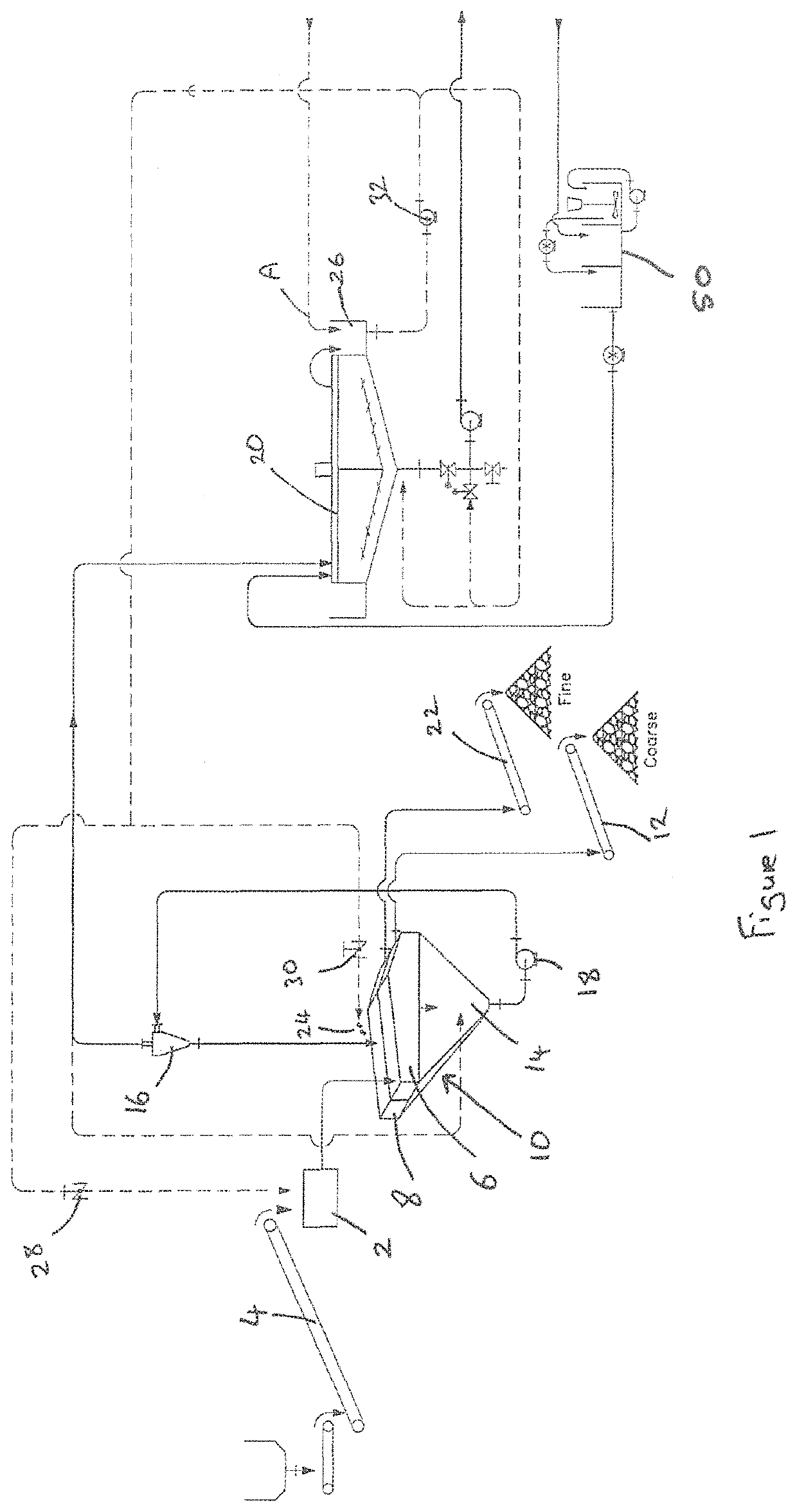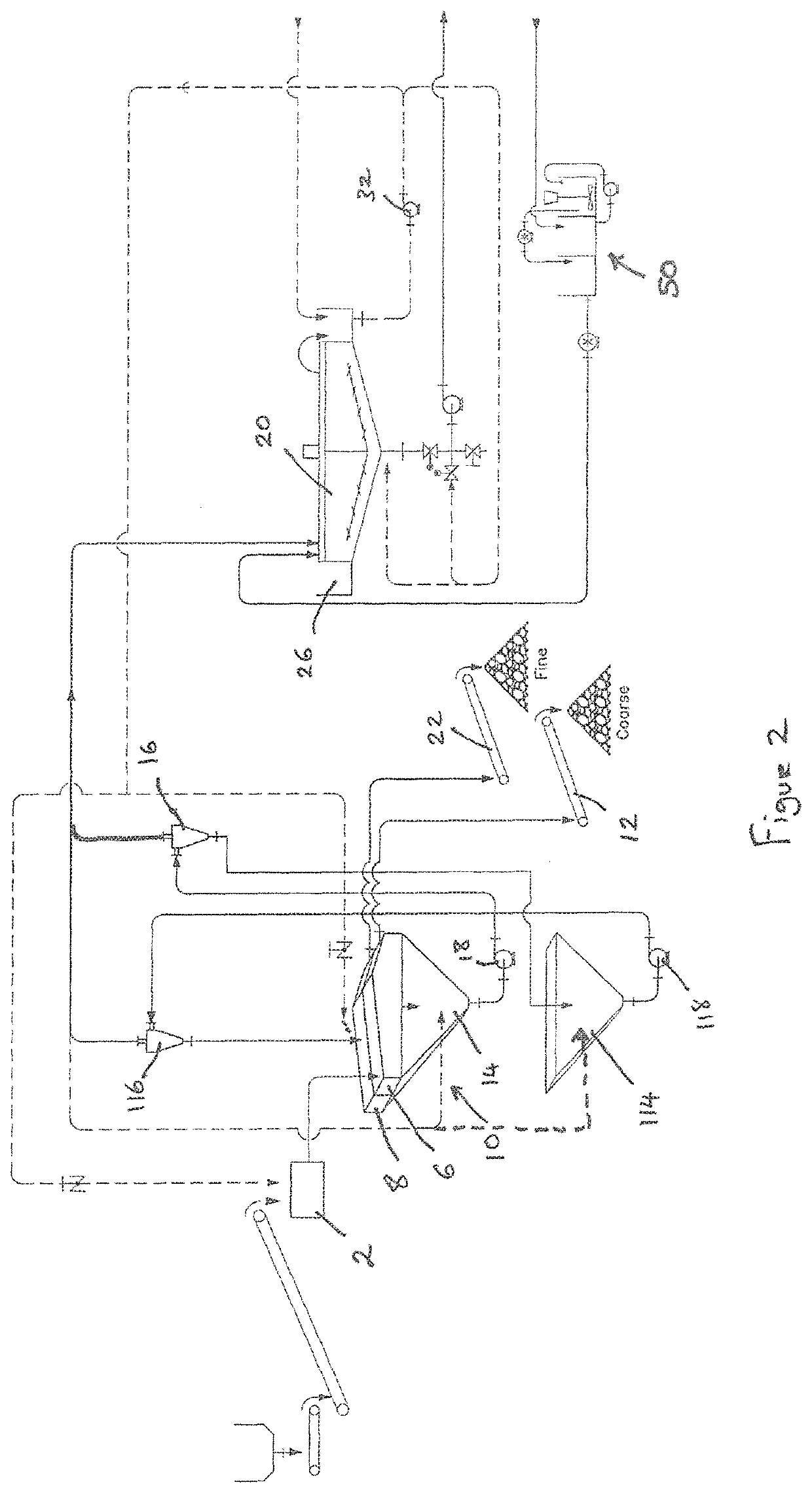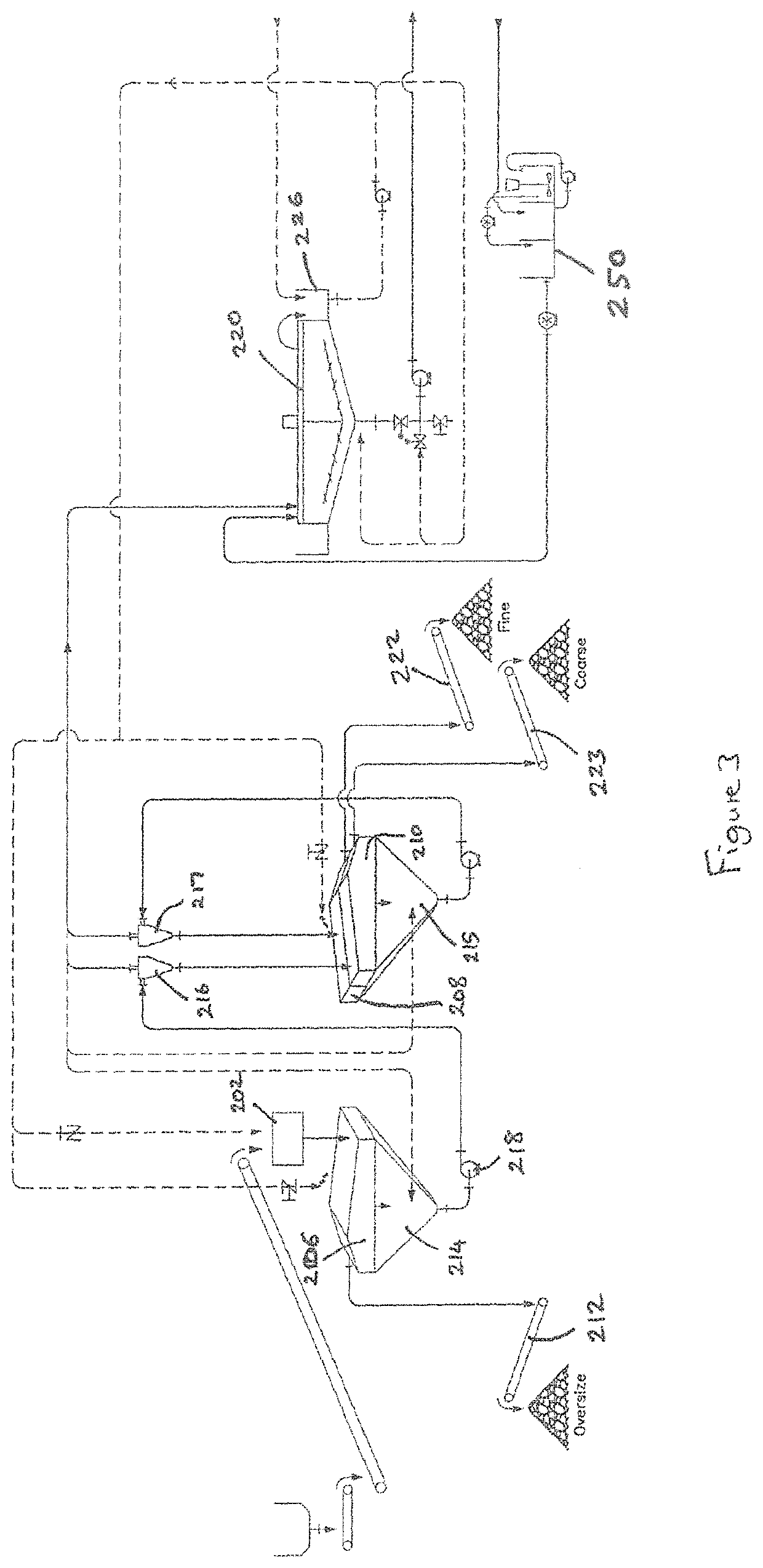Method and apparatus for washing and grading sand
a technology of sand washing and grading, applied in the direction of sediment separation, separation process, liquid cleaning, etc., to achieve the effect of facilitating the settling ou
- Summary
- Abstract
- Description
- Claims
- Application Information
AI Technical Summary
Benefits of technology
Problems solved by technology
Method used
Image
Examples
first embodiment
[0026]As illustrated in FIG. 1, an apparatus for washing and grading sand in accordance with the present invention includes a wash box 2 for receiving feed material to be washed and graded, the feed material being conveyed into the wash box via a suitable belt conveyor 4. Water is added to the material in the wash box 2 and the fluidised material is delivered onto a first deck 6 of a split deck vibrating screen 10 for grading and dewatering the sand.
[0027]The first deck 6 of the split deck screen 10 has relatively large apertures formed therein, wherein undersize sand and water passes through the apertures in the deck 6 while oversize material passes over the deck 6, being washed and dewatered thereon, before being delivered onto a first conveyor 12 to be conveyed onto a first stock pile as a first sand product, including a course grade of sand, for example having a +5 mm particle size.
[0028]The undersize material and contaminated water collected in the sump 14 of the split deck scr...
second embodiment
[0034]Where the feed material contains 15% or less silt only one pass of the hydrocyclone may be required to remove the silt therefrom. In such case only material from the sump of the first deck 6 need be supplied to the hydrocyclone 16. However, for feed material containing more than 15% silt, two hydrocyclone passes may be required to remove the silt from the sand. In such case, in the invention shown in FIG. 2, in a first pass, material may be pumped from the sump of the first deck 6 to a first hydrocyclone 16, the underflow from the first hydrocyclone 16 passing into a further sump 114 before being pumped by a further pump 118 into a second hydrocyclone 116, the underflow from the second hydrocyclone 116 being delivered onto the second deck 8 of the split screen deck while the overflow from both the first and second hydrocyclones 16,116 is passed to the settling tank for recycling.
[0035]A portion of the overflow from the (or each) hydrocyclone 16,116 may be passed back to the su...
third embodiment
[0043]In a third embodiment, shown in FIG. 3, an additional grading stage may be added to enable the production of three grades of washed sand. In such embodiment, the fluidised feed material from the wash box 202 is fed onto the deck of a first screen 206, dewatered oversize sand being delivered onto a first conveyor 212 for delivery onto a first stockpile as a first sand product, including a course grade of sand, or as trash.
[0044]Undersize material and water collected in the sump 214 of the first screen 206 is pumped into a first hydrocyclone 216 by a suitable pump 218. The underflow from the first hydrocyclone 216 is delivered onto the deck of a second screen 208, whereby a dewatered oversize sand from the second screen is delivered onto a second conveyor 222 to be delivered onto a second stockpile as a second sand product, including an intermediate grade of sand.
[0045]Undersize sand and water from the second screen 208 is collected in a sump 215 of the second screen 218 and is ...
PUM
| Property | Measurement | Unit |
|---|---|---|
| Height | aaaaa | aaaaa |
| Content | aaaaa | aaaaa |
Abstract
Description
Claims
Application Information
 Login to View More
Login to View More - R&D
- Intellectual Property
- Life Sciences
- Materials
- Tech Scout
- Unparalleled Data Quality
- Higher Quality Content
- 60% Fewer Hallucinations
Browse by: Latest US Patents, China's latest patents, Technical Efficacy Thesaurus, Application Domain, Technology Topic, Popular Technical Reports.
© 2025 PatSnap. All rights reserved.Legal|Privacy policy|Modern Slavery Act Transparency Statement|Sitemap|About US| Contact US: help@patsnap.com



